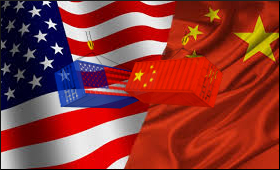|
|
|

|
Tackling trade tensions
|
|

|
|
| Top Stories |
 |
|
|
|
Amit Kapoor | 27 Jun, 2019
The trade war between US and China seemed like a distant conflict to
most Indians. As the two largest economies in the world dished out
threats and counter-threats of tariff hikes, India was largely a
disinterested bystander with the only consequential fear of slower
global trade. However, over the course of last few weeks, the US
reservations with global trade have expanded across the Asian continent
and specifically onto India.
Over the years, the Indian economy
has seen a recurrent mention in Trump's speeches on trade highlighting
India's high tariffs. But matters rose to a crescendo when a few weeks
ago the US terminated India's designation as a beneficiary developing
country under the General System of Preferences (GSP) Programme. This
came as a setback to the newly elected Modi government, which had made
tireless efforts to make inroads into the Trump administration in its
first term.
The GSP Programme, established by the Trade Act of
1974, is one of the oldest and largest trade preferential tariff systems
of the US, which provides a duty-free treatment for over 3,500 products
from a wide range of designated beneficiary countries inclusive of
least-developed nations. It aims at enabling these countries to climb
out of poverty and boost their economic growth. GSP promotes sustainable
economic development by eliminating duties on thousands of products
when imported from one of 120 designated beneficiary countries and
territories result in an increased and diversified trade with the US.
As
per the Congressional Research Service report, in the year 2018, the
programme exempted Indian goods worth more than $6 billion from import
duties. As a result, India exported goods worth around $54 billion to
the United States in the same year and bought $33 billion worth of
American goods. There might have been significant benefits from the
programme in the past but India's reliance on it has been reducing
substantially over the years.
The US decision to withdraw the GSP
has come after the country's repeated demands for greater market access
for a range of products, which India has been postponing. However, it
is interesting to note that the US trade deficit with India has been
following a downward trend since 2016. With each passing year the
deficits are falling (USD 21.3 billion 2018 from USD 22.9 billion in
2017 and USD 24.4 billion in 2016). This couldn't have been possible if
India wasn't providing reasonable market access to its largest trading
partner.
In the past, India has often been accommodative of US
trade tariffs and embargos, raising the hopes for a negotiated
settlement. In contrast, this time India has decided to retaliate by
imposing duties on about 29 goods of US origin worth $200 million. But,
it is in the interest of both economies that the situation does not
escalate into a series of retaliatory bouts.
The Trump
administration, which is bent upon fixing its trade equation with China
needs allies in the developing world. In the on-going trade war with
China, India can prove to be a useful ally. It is extremely
short-sighted to alienate India; especially when India's trade surplus
with the US is merely $23 billion against China's $323 billion.
Meanwhile,
the stakes for the Indian economy are also too high to get involved
into an unnecessary trade war. A large number of export items to the US
from India, including gems, jewellery and textiles, are labour-intensive
products. An economy which is actively looking to push employment
levels upwards cannot afford to lose out on this front.
Moreover,
in the first five years of the Modi government, India received record
levels of foreign investment, which are beginning to taper off. The
growth rate for the economy has also slumped to a five-year low. So, the
first task on the new foreign minister, Jaishankar's list would be to
iron out these issues through bilateral trade discussions without
compromising India's national interests.
The US Secretary of
State, Mike Pompeo's visit to India this month will be a useful
opportunity to resolve these differences through negotiations. It would
be a win-win for both countries to make amends. While US firms looking
to relocate out of China due to rising manufacturing costs there would
benefit from less strained trade relations with India. More FDI by such
large firms is the need of the hour for India as an influx by such big
companies has shown a boost in the economic activity by stimulating
employment and improving the establishment of intermediate firms -
especially in the small and medium sector - leading to an expansion in
exports over time. Only time will tell how this diplomatic situation
shapes up.
|
|
|
| |
|
|
|
|
|
|
|
|
|
|
|
|
|
|
| |
| Customs Exchange Rates |
| Currency |
Import |
Export |
US Dollar
|
84.35
|
82.60 |
UK Pound
|
106.35
|
102.90 |
Euro
|
92.50
|
89.35 |
| Japanese
Yen |
55.05 |
53.40 |
| As on 12 Oct, 2024 |
|
|
| Daily Poll |
 |
 |
| Do you think Indian businesses will be negatively affected by Trump's America First Policy? |
|
|
|
|
|
| Commented Stories |
 |
|
|
|
|
|
| |
|